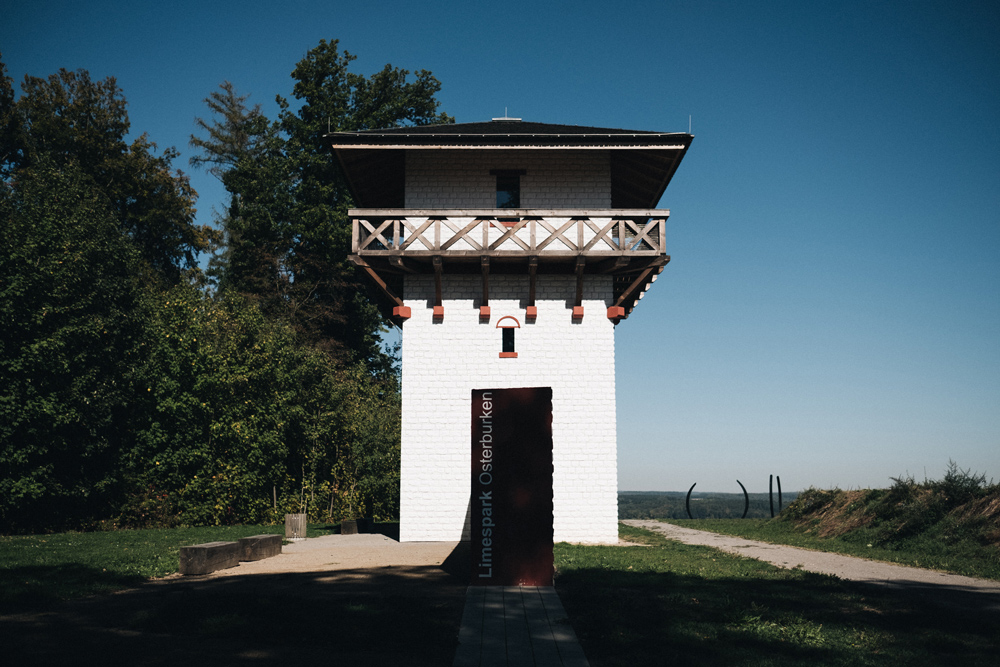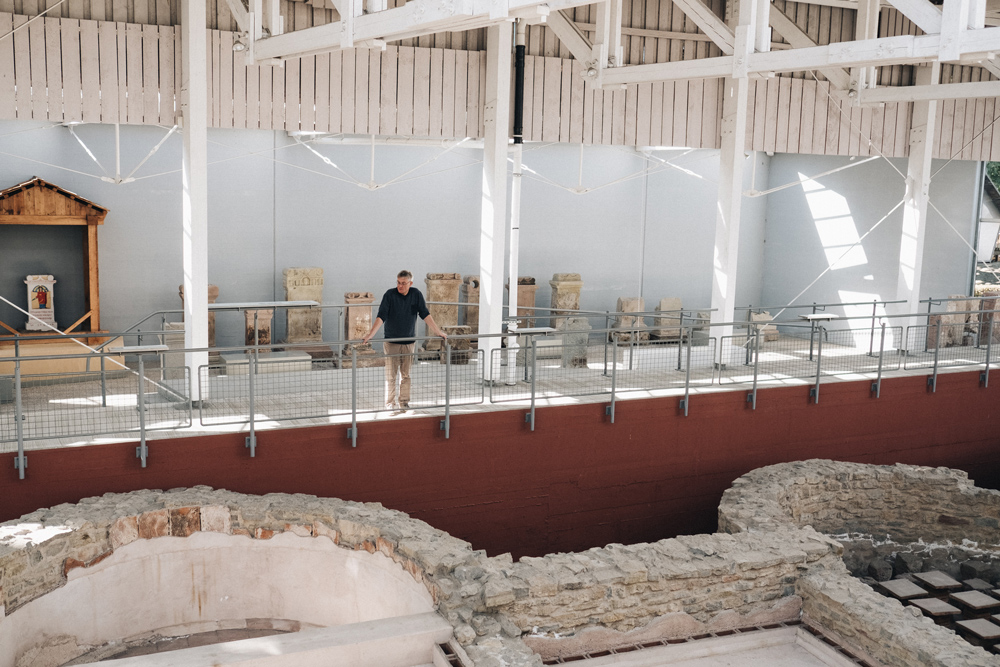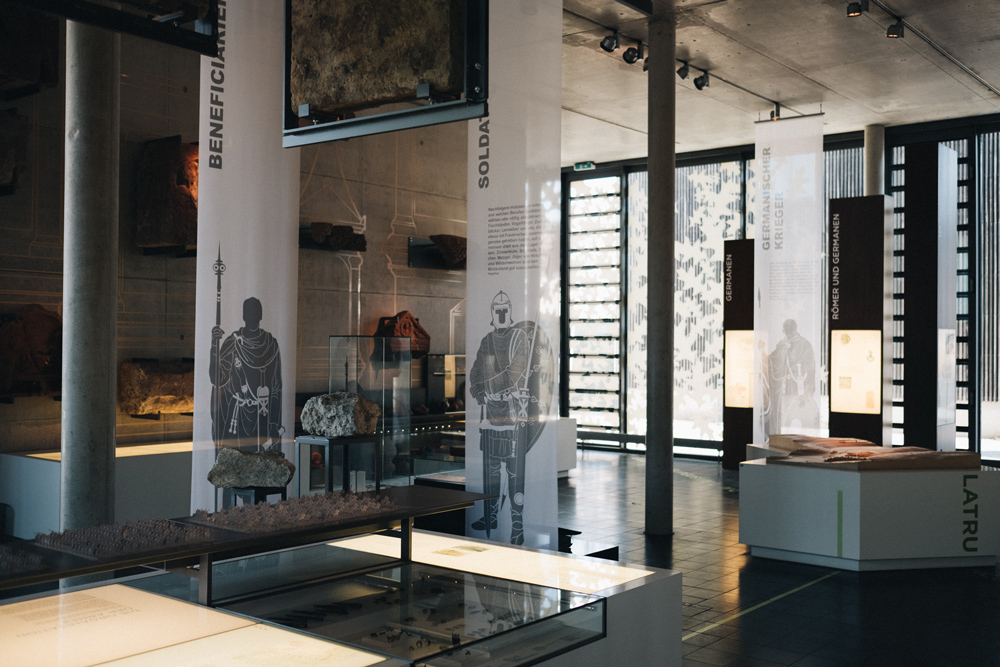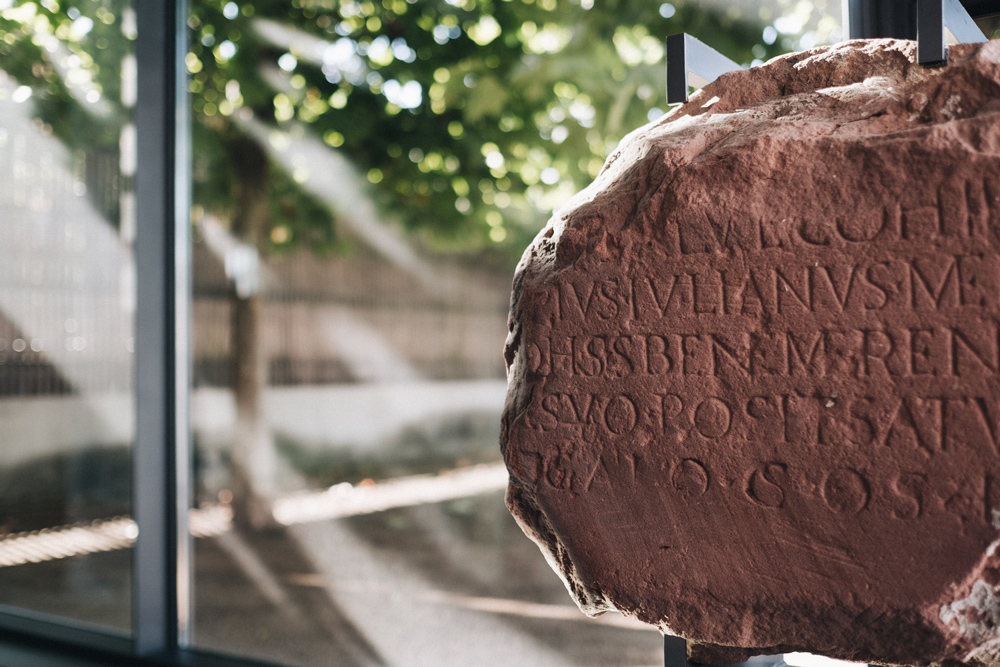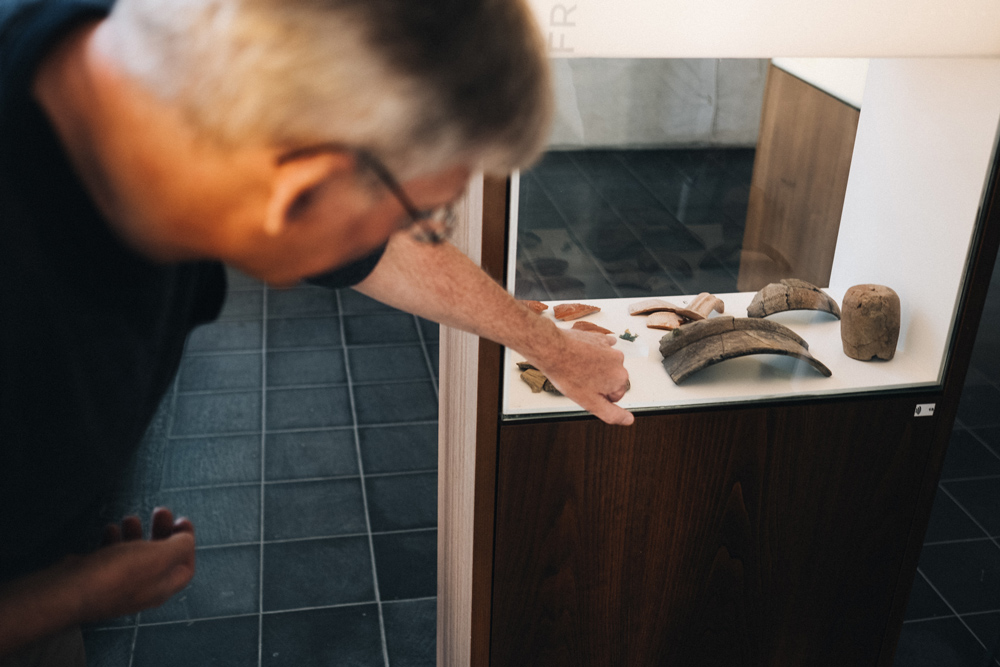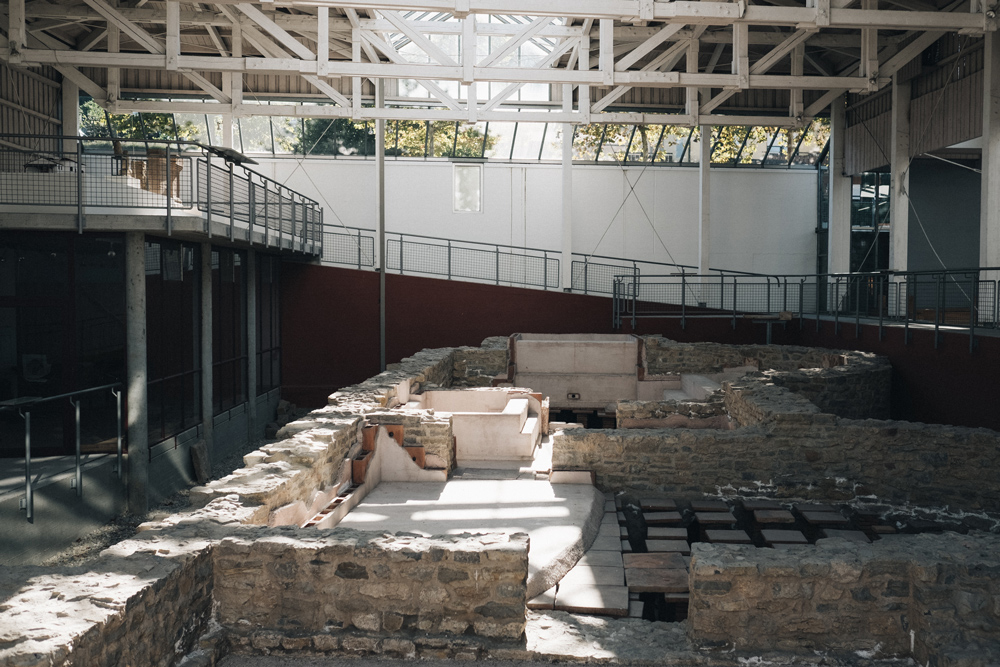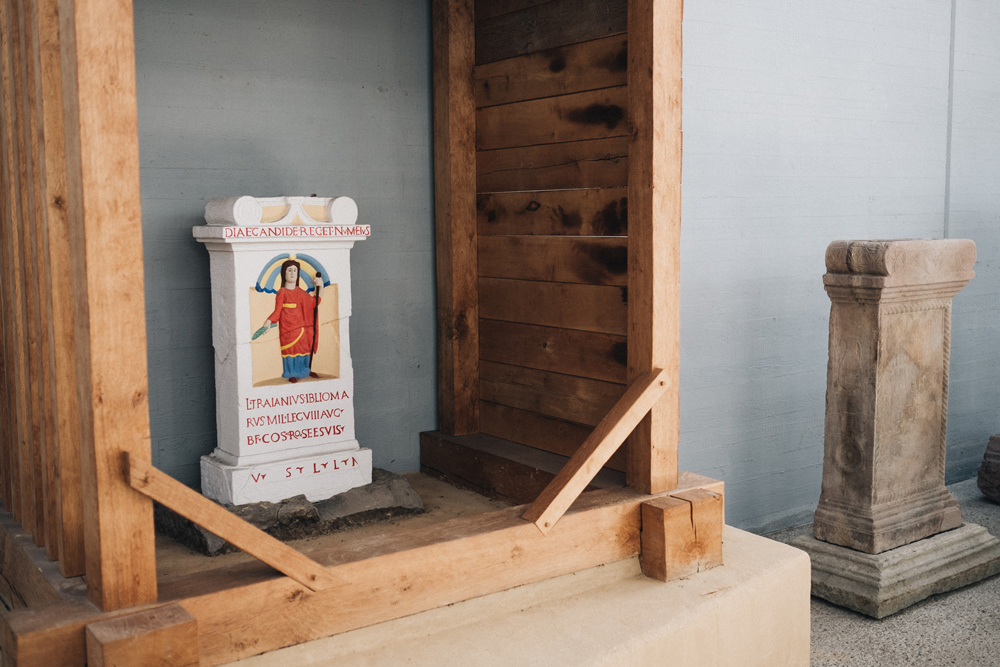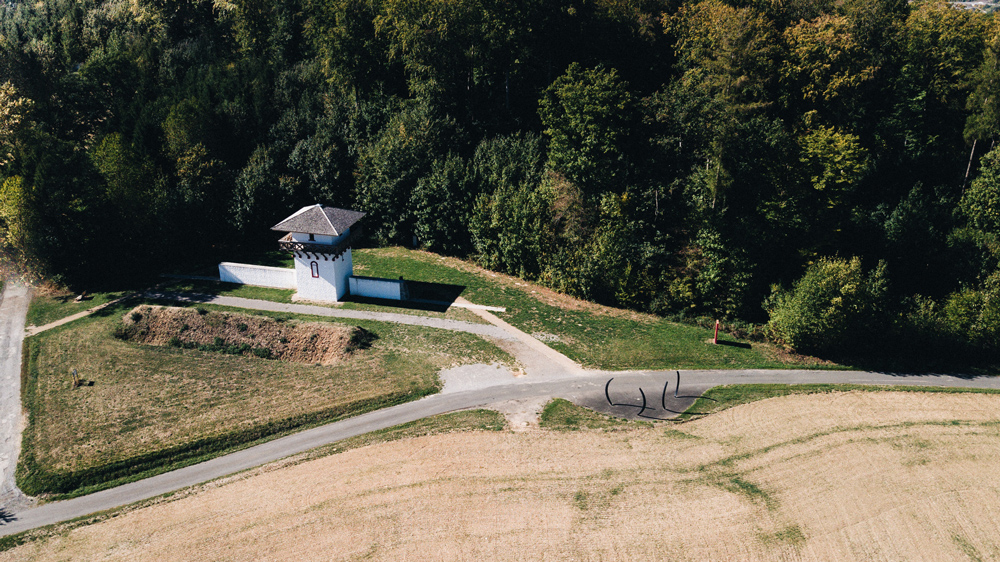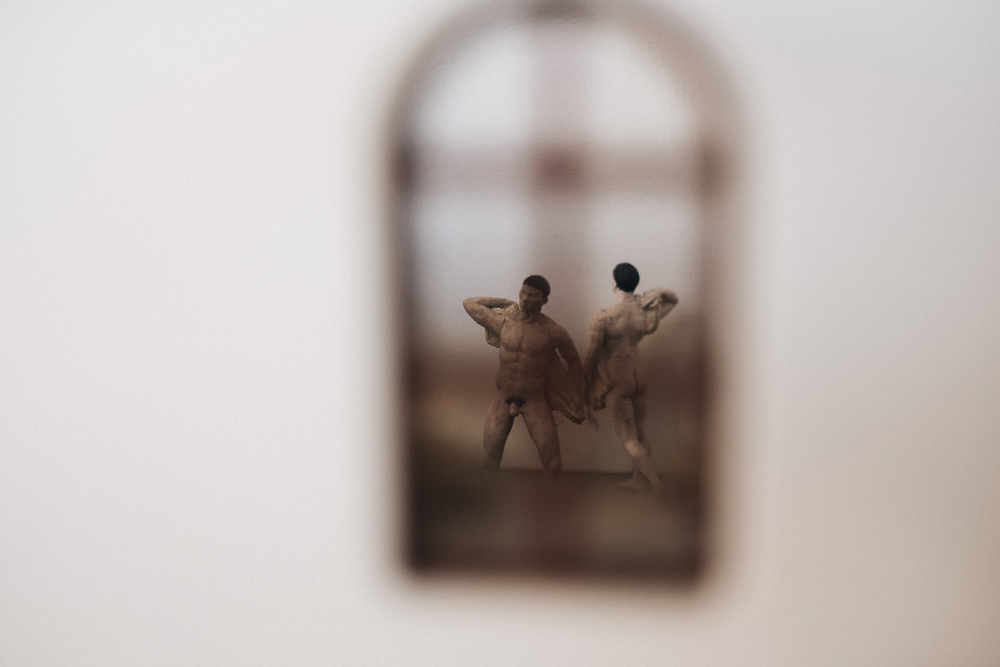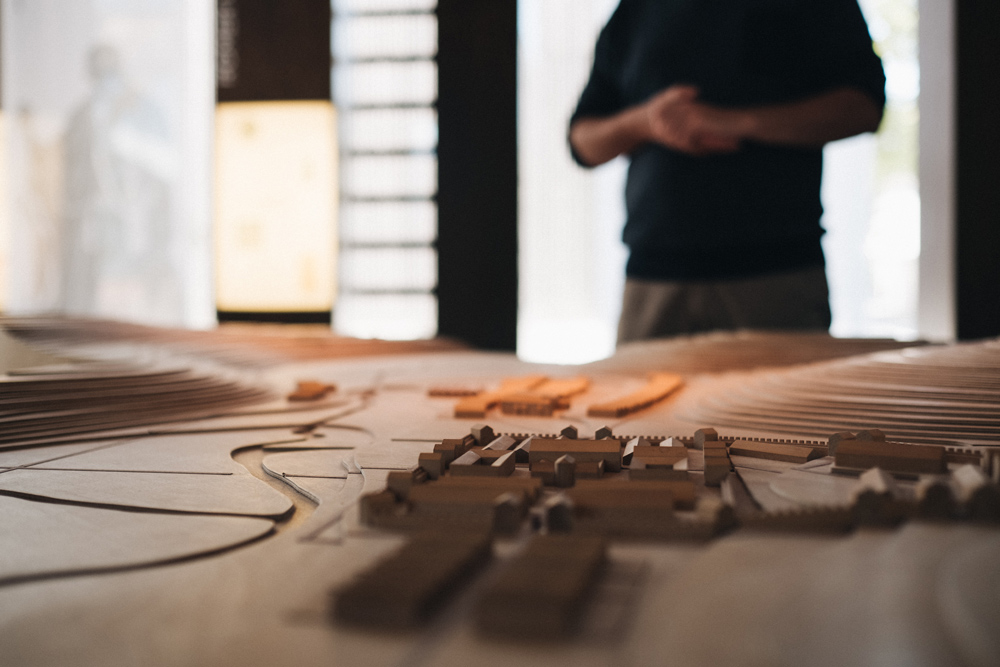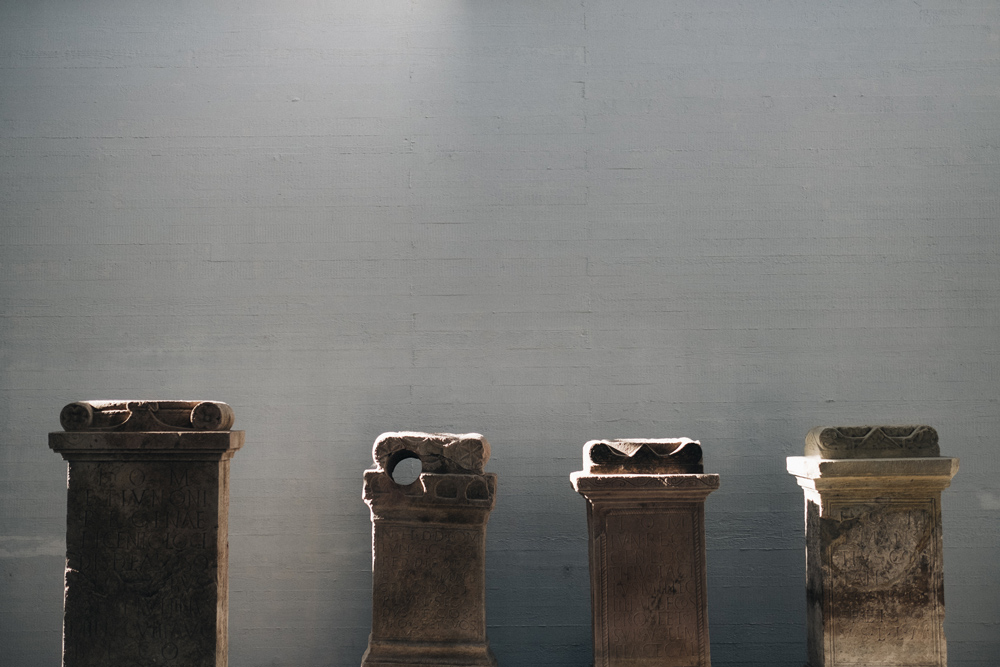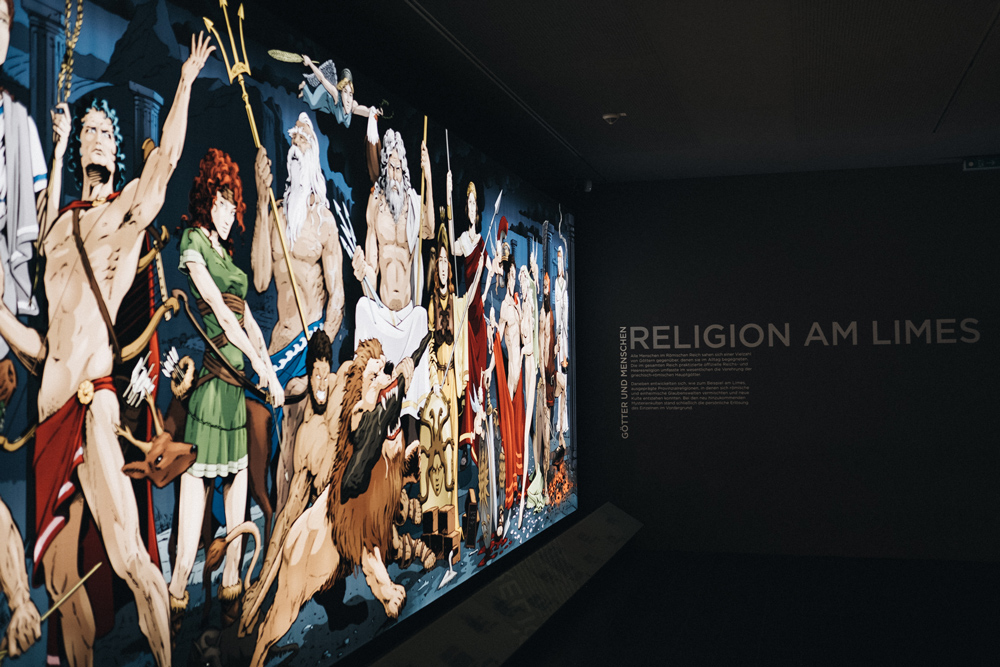The Roman fort appears peaceful in the rays of the morning sun. The view from the watchtower opens up across the Kirnautal river valley and the surrounding hills. Forest treetops sway lazily in a gentle breeze—when suddenly war cries break the peace and quiet: the Alamanni are attacking! They attack the few remaining Roman units still protecting the border fortifications of the collapsing Roman Empire here in the 3rdcentury AD. The latter are overrun by hordes, marking the end of the long and splendid story of this outstation of Rome—right in the middle of the Odenwald.
“We stage history as vividly as possible for the visitors of our Romans’ museum,” says Dr. Jörg Scheuerbrandt, who is the museum director and commissioner for museums in the Neckar-Odenwald-Kreis district. He glances through an ‘archaeoscope,’ a telescope that makes the historical scene tangible in a digital way.
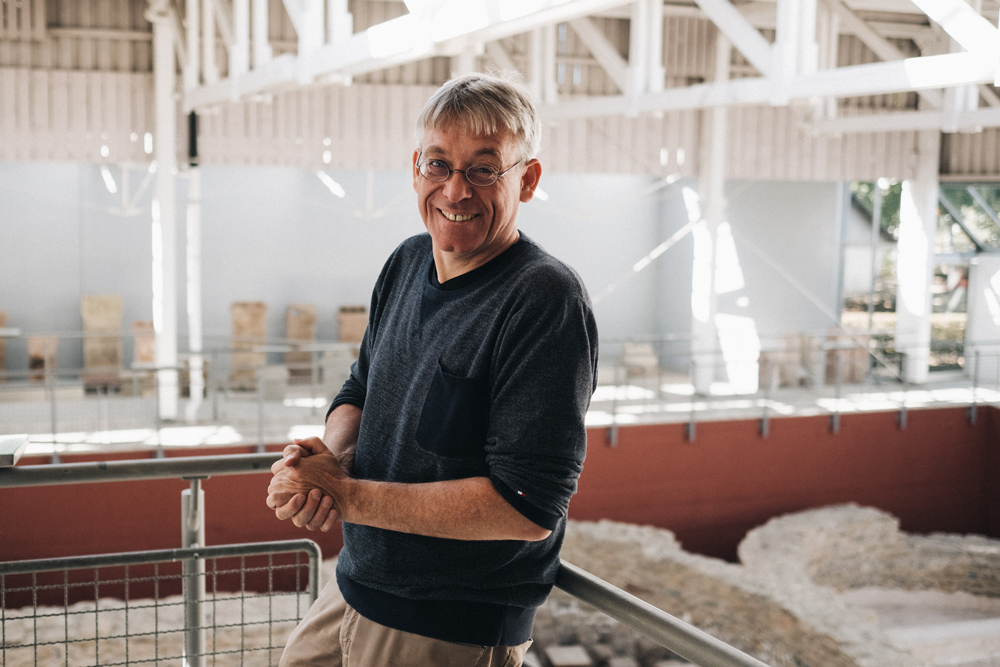
Dr. Jörg Scheuerbrandt: museum director and commissioner for museums in the Neckar-Odenwald-Kreis district.
A true-to-scale reproduction of the tower is a highlight of the museum and it is accessible to visitors, visibly located on elevated ground about a kilometre south of the town. The replica shows the state of construction of the Limes border fortification in the 3rdcentury AD and allows for an exciting walk into the past. The watchtower and a part of the wall are the impressive embodiment of the last extension stage of the Limes—at almost 1800 years ago.
What today is the Neckar-Odenwald-Kreis district used to be an area in which the Romans tried to reinforce power along the Limes. The fort in Osterburken was a Roman military camp responsible for surveillance along the “Vorderer Limes” part of the Upper Germanic-Rhaetian Limes. Today, the fortification is a UNESCO World Heritage site and together with the Romans’ museum it embodies a unique historic ensemble.
Apart from the fort, which became a double fort through an extension attached later on, some of the precisely dated buildings and valuable finds have become famous beyond the region. “If you carry out excavations around here, you inevitably discover remains from the Roman era,” Jörg explains. This makes Osterburken one of the most important archaeological sites along this segment of the Limes. “Osterburken is a real Roman replication,” says the director, who welcomes over 16,000 visitors per year in the museum that opened in 2006. “We want to make Roman history tangible for people of every age here,” says the archaeologist. Was he enthusiastic about Latin at school? “Not at all,” he laughs “I used to hate Latin. But I have always been excited about Asterix and the Roman classical age—and I want to pass this excitement on to other people through the museum.”
